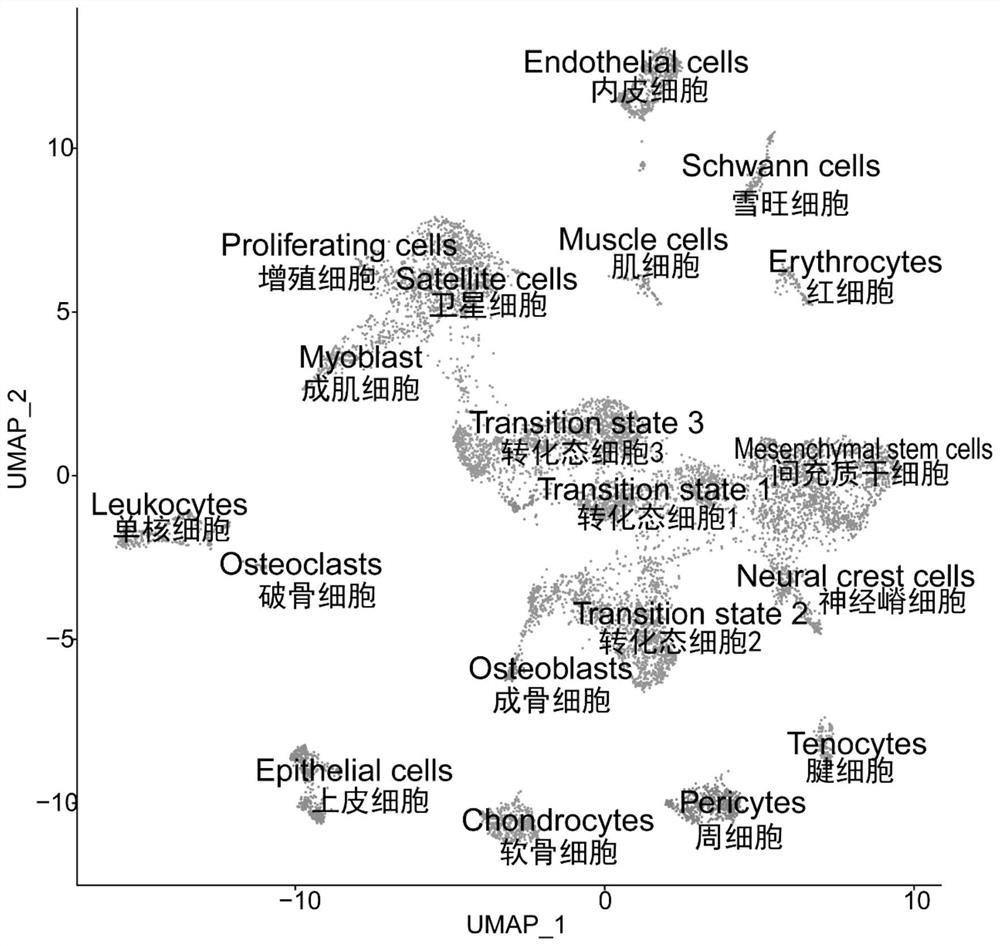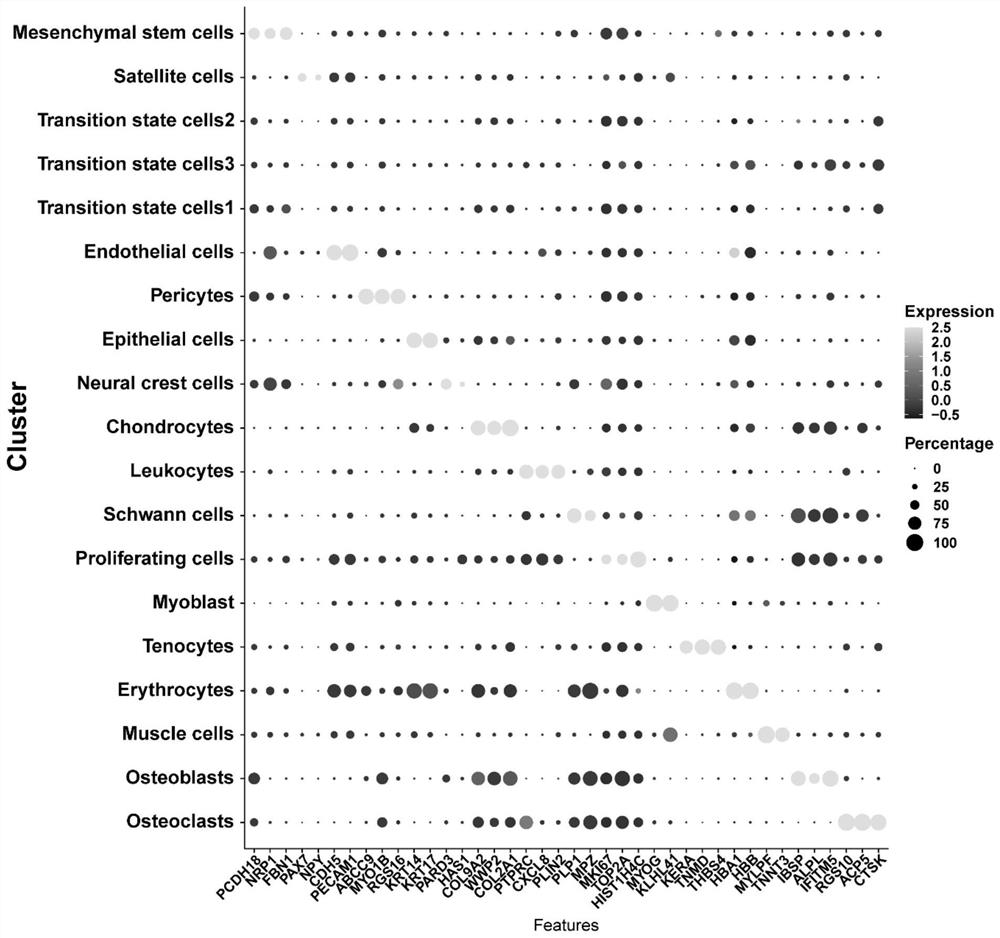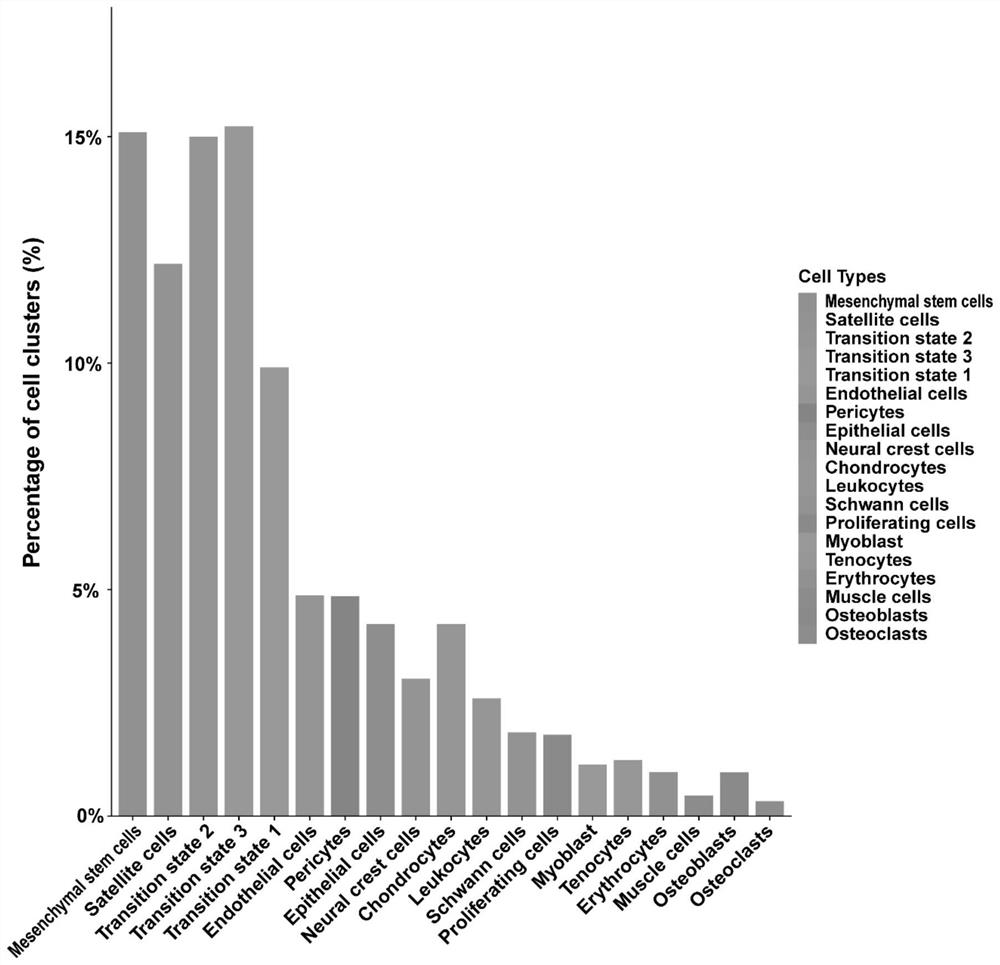Cell development map and development marker gene of mandible tissue of human four-month-old embryo
A mandibular, cellular technology, applied in the direction of genomics, proteomics, microbial determination/inspection, etc.
- Summary
- Abstract
- Description
- Claims
- Application Information
AI Technical Summary
Problems solved by technology
Method used
Image
Examples
Embodiment Construction
[0023] In order to make the technical problems, technical solutions and advantages to be solved by the present invention more clear, the following will be described in detail with reference to specific embodiments.
[0024] The invention performs single-cell sequencing on human four-month-old embryo mandibular tissue, uses UMAP (Uniform Manifold Approximation and Projection for Dimension Reduction, uniform manifold approximation and projection algorithm) to reduce dimensionality into groups, and utilizes Marker gene (cell group characteristic expression gene) ) annotated cell populations and constructed a cellular developmental map of human embryonic mandibular tissue. The specific steps are:
[0025] 1. Preparation of single cell suspension
[0026] The mandibular tissue was washed three times with Hanks equilibration solution, cut into 1-2 mm tissue pieces, and placed in 2 ml GEXSCOPE. TM (Singleron Biotechnologies) tissue dissociation solution was digested at 37°C for 15 ...
PUM
 Login to View More
Login to View More Abstract
Description
Claims
Application Information
 Login to View More
Login to View More - R&D
- Intellectual Property
- Life Sciences
- Materials
- Tech Scout
- Unparalleled Data Quality
- Higher Quality Content
- 60% Fewer Hallucinations
Browse by: Latest US Patents, China's latest patents, Technical Efficacy Thesaurus, Application Domain, Technology Topic, Popular Technical Reports.
© 2025 PatSnap. All rights reserved.Legal|Privacy policy|Modern Slavery Act Transparency Statement|Sitemap|About US| Contact US: help@patsnap.com



